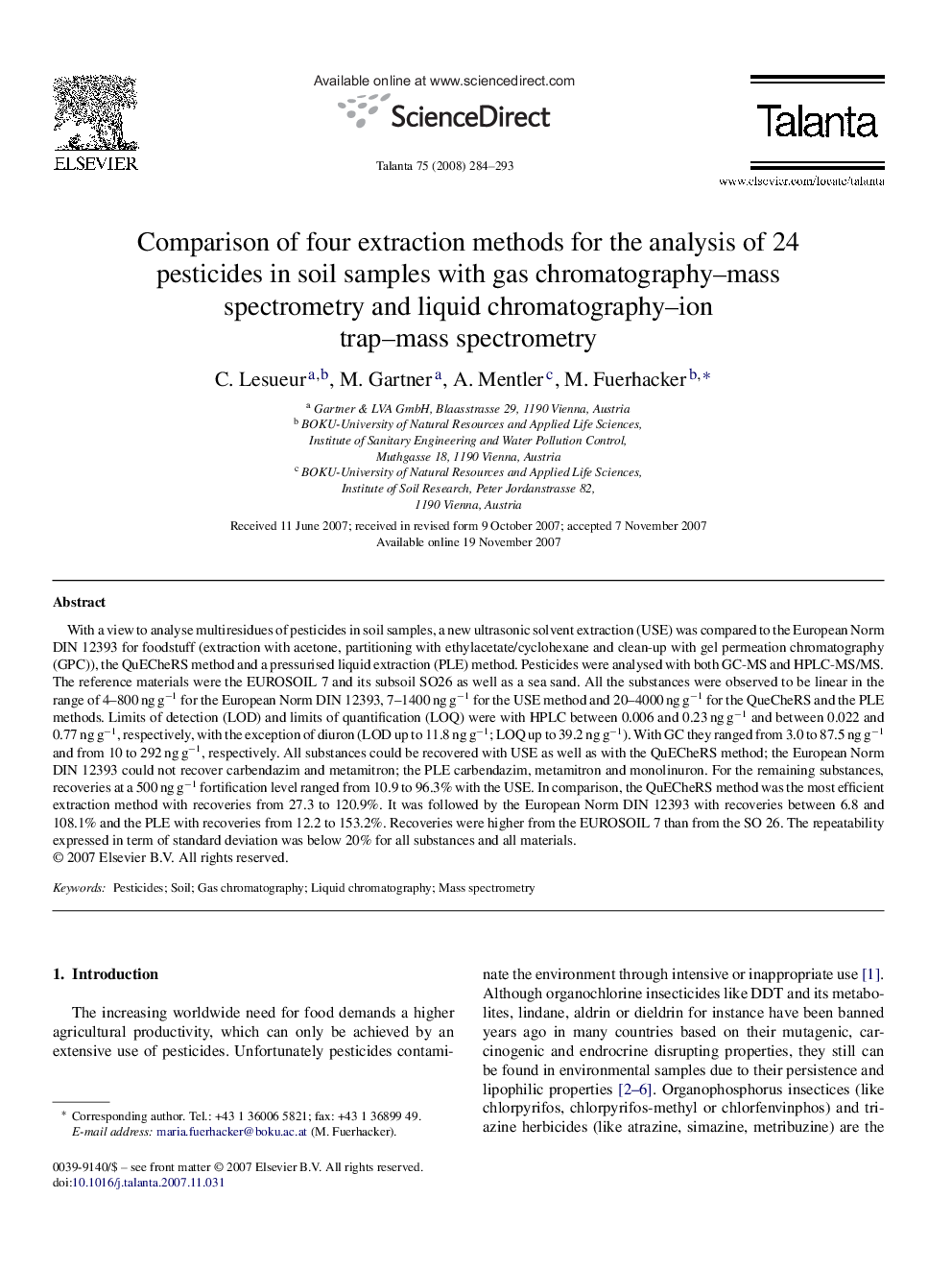| Article ID | Journal | Published Year | Pages | File Type |
|---|---|---|---|---|
| 1245552 | Talanta | 2008 | 10 Pages |
With a view to analyse multiresidues of pesticides in soil samples, a new ultrasonic solvent extraction (USE) was compared to the European Norm DIN 12393 for foodstuff (extraction with acetone, partitioning with ethylacetate/cyclohexane and clean-up with gel permeation chromatography (GPC)), the QuECheRS method and a pressurised liquid extraction (PLE) method. Pesticides were analysed with both GC-MS and HPLC-MS/MS. The reference materials were the EUROSOIL 7 and its subsoil SO26 as well as a sea sand. All the substances were observed to be linear in the range of 4–800 ng g−1 for the European Norm DIN 12393, 7–1400 ng g−1 for the USE method and 20–4000 ng g−1 for the QueCheRS and the PLE methods. Limits of detection (LOD) and limits of quantification (LOQ) were with HPLC between 0.006 and 0.23 ng g−1 and between 0.022 and 0.77 ng g−1, respectively, with the exception of diuron (LOD up to 11.8 ng g−1; LOQ up to 39.2 ng g−1). With GC they ranged from 3.0 to 87.5 ng g−1 and from 10 to 292 ng g−1, respectively. All substances could be recovered with USE as well as with the QuECheRS method; the European Norm DIN 12393 could not recover carbendazim and metamitron; the PLE carbendazim, metamitron and monolinuron. For the remaining substances, recoveries at a 500 ng g−1 fortification level ranged from 10.9 to 96.3% with the USE. In comparison, the QuECheRS method was the most efficient extraction method with recoveries from 27.3 to 120.9%. It was followed by the European Norm DIN 12393 with recoveries between 6.8 and 108.1% and the PLE with recoveries from 12.2 to 153.2%. Recoveries were higher from the EUROSOIL 7 than from the SO 26. The repeatability expressed in term of standard deviation was below 20% for all substances and all materials.
